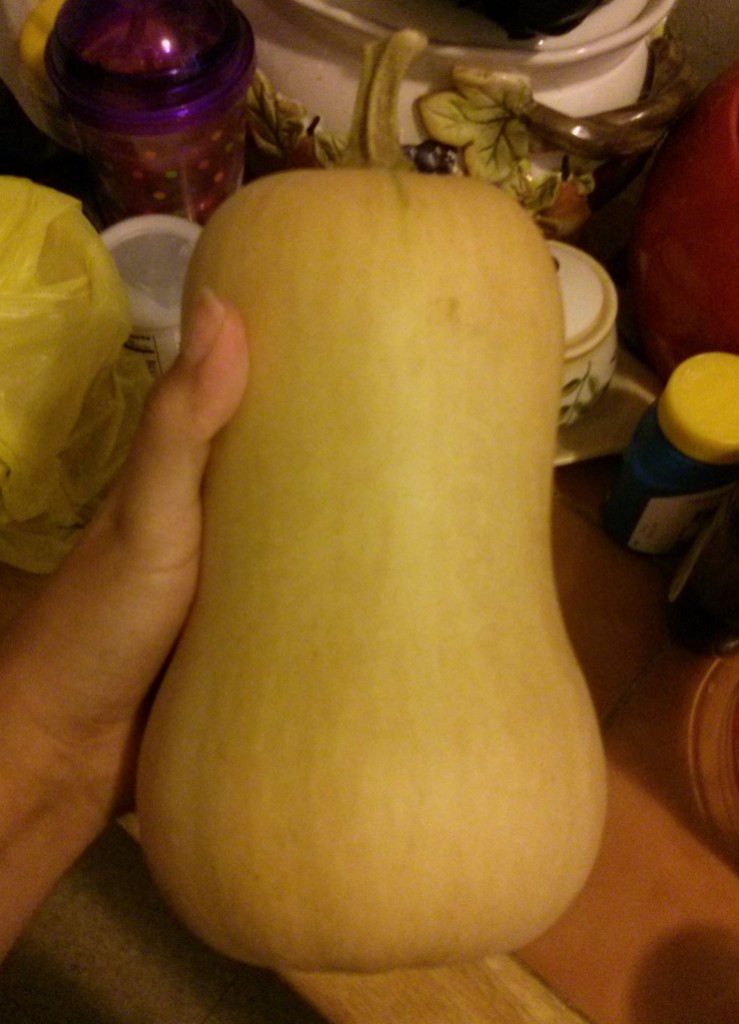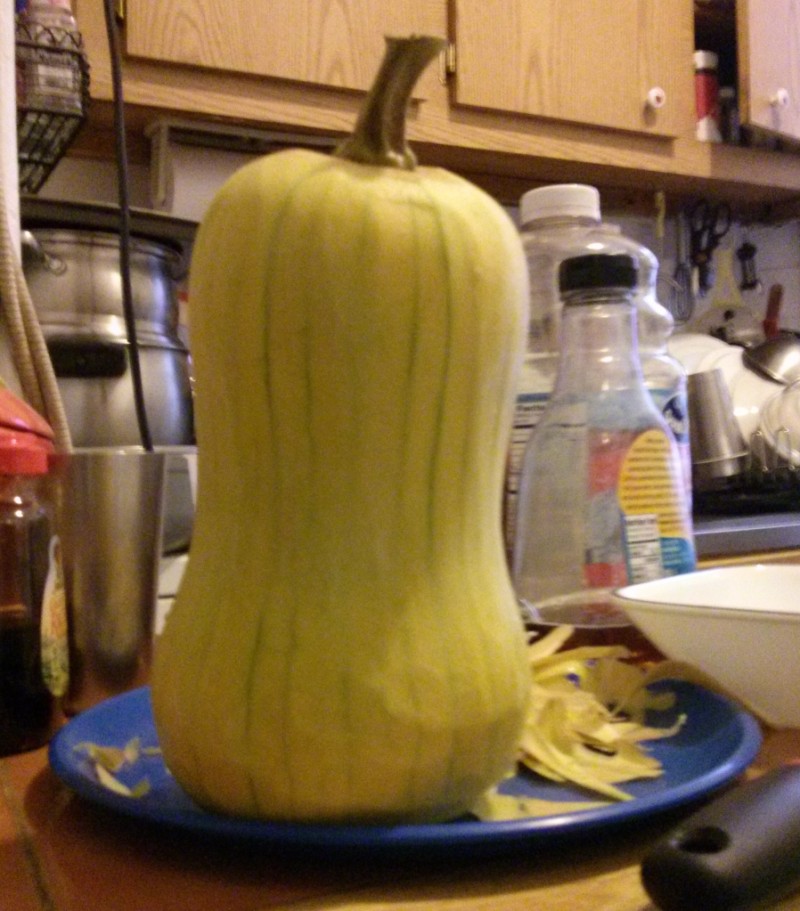As the title of this post implies, I have renamed this blog. I thought about doing this for a while, and decided to take the plunge. “Toaster Oven Confections” is now “Lucy the Baker.” Why the change? Well, since beginning this blog, I have hardly used my toaster oven for anything. All of the baked recipes on this blog so far have been baked using a regular, stove oven. I don’t want to deceive or mislead you guys, so I changed it. Does this mean that the recipe I post can’t be done in a toaster oven? No! If you do want to experiment and bake in your toaster oven, scale your recipe and temperatures accordingly. This is a rebranding of sorts because I want to post a wider variety of recipes, and try to get myself in the kitchen and on this blog more often.
Anyway, let’s talk squash. Butternut squash is one of my favorite vegetables. This weirdly shaped winter squash isn’t even a vegetable! The butternut squash is actually a fruit and is known for its bright orange appearance, and its nutty and sweet taste. Its also a great source of vitamin A, vitamin E, vitamin C, and fiber.

Butternut squash made its first appearance for the season two weeks ago at my local farmer’s market. I have an affinity for orange vegetables, and was patiently awaiting its arrival. I have bought two in the past two weeks and have been in bliss since. Butternut squash can be cooked any way you’d cook a sweet potato, another one of my fave orange veggies, but best way to tackle one of these beauties is to roast them.
Preheat your oven to 375F and line two baking sheets with parchment paper. To prep a butternut squash, peel the skin off with a vegetable peeler. Now, peeling this baby whole can be a bit of a challenge because its curves can be hard to reach with the peeler. You can actually cut the squash at the bulb, to make peeling easier; just be careful because it is pretty slippery when peeled! Not in the mood to hassle with a veggie peeler? No problem! Roast the squash with the skin on; it is totally edible and softens when roasted.

After peeling, grab your cutting board and knife, if you haven’t already, and cut this sucker in half. You can either cut it lengthwise and roast in two halves, or you can separate the bulb from the body and chop both into cubes. Cut off the bulb by cutting the rounded part of the squash. Cut the bulb in half to deseed. The bulb is full of pulp, and seeds that are also edible once roasted; kind of like pumpkin seeds or pepitas. We don’t want the seeds today, so take a spoon and shovel out the pulp and seeds.
I like to slice my squash into disks, and later into cubes. Place the bulb halves on your cutting board and slice into thick disks. Watch your fingers when chopping! Once done slicing into disks, cut them into cubes. Repeat with the rest of the squash.

After you have cubed all your squash, and your fingers are still intact, drizzle the cubes with some olive oil and toss to coat. Distribute your cubes evenly onto the prepped baking sheets. If you’re using the squash in a savory application, liberally season with salt. Roast the cubes for 30-40 minutes, depending on how hot your oven runs, tossing halfway during cooking.

The end result is a soft, nutty cube of deliciousness. If you’re planning on eating them with dinner, you can eat as is or puree to put into soups, or even mash them potato style. You can also use roasted butternut squash for sweet applications; just roast, mash/puree, and use them where you would normally use pumpkin or sweet potato.
I encourage you to try a butternut squash if you haven’t, and revel in its deliciousness. For those who already feast on this amazing fruit, what are your favorite butternut squash recipes?



